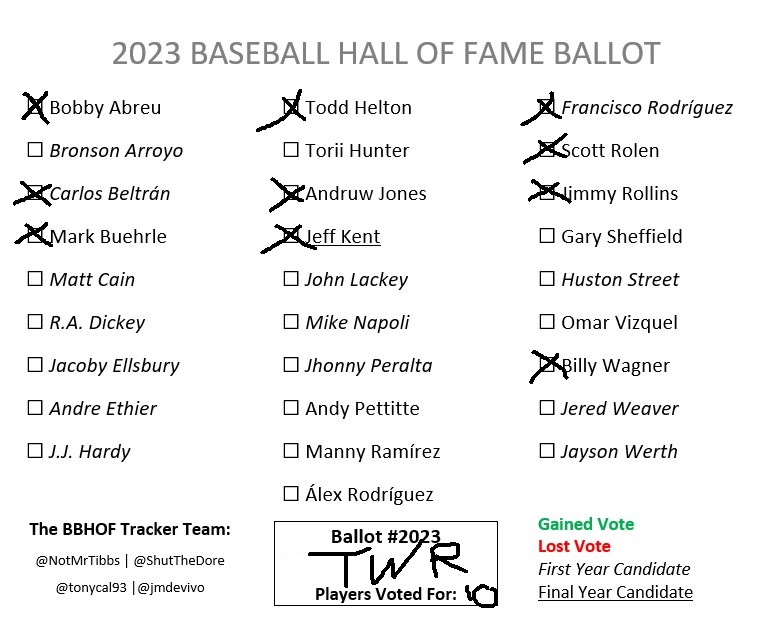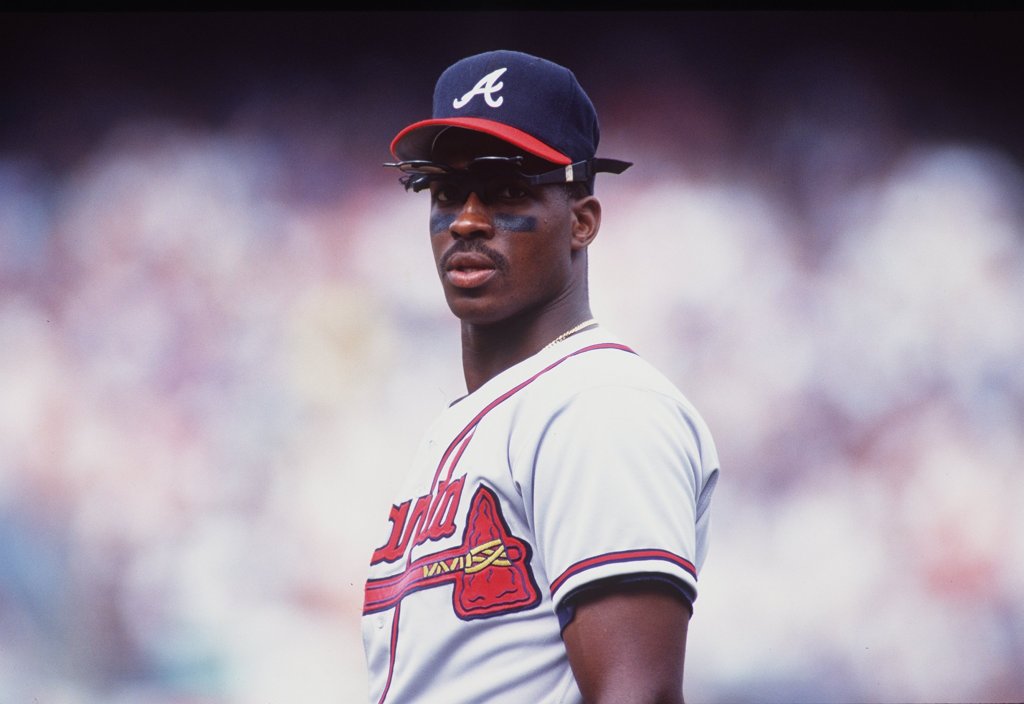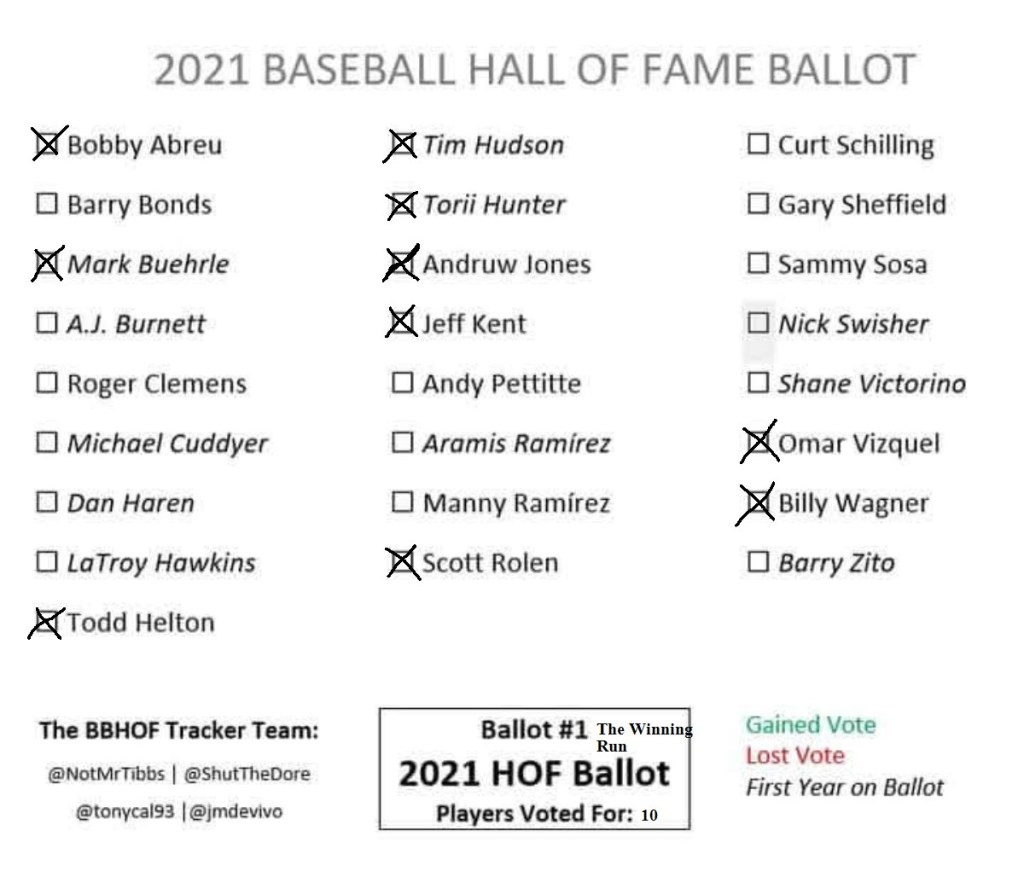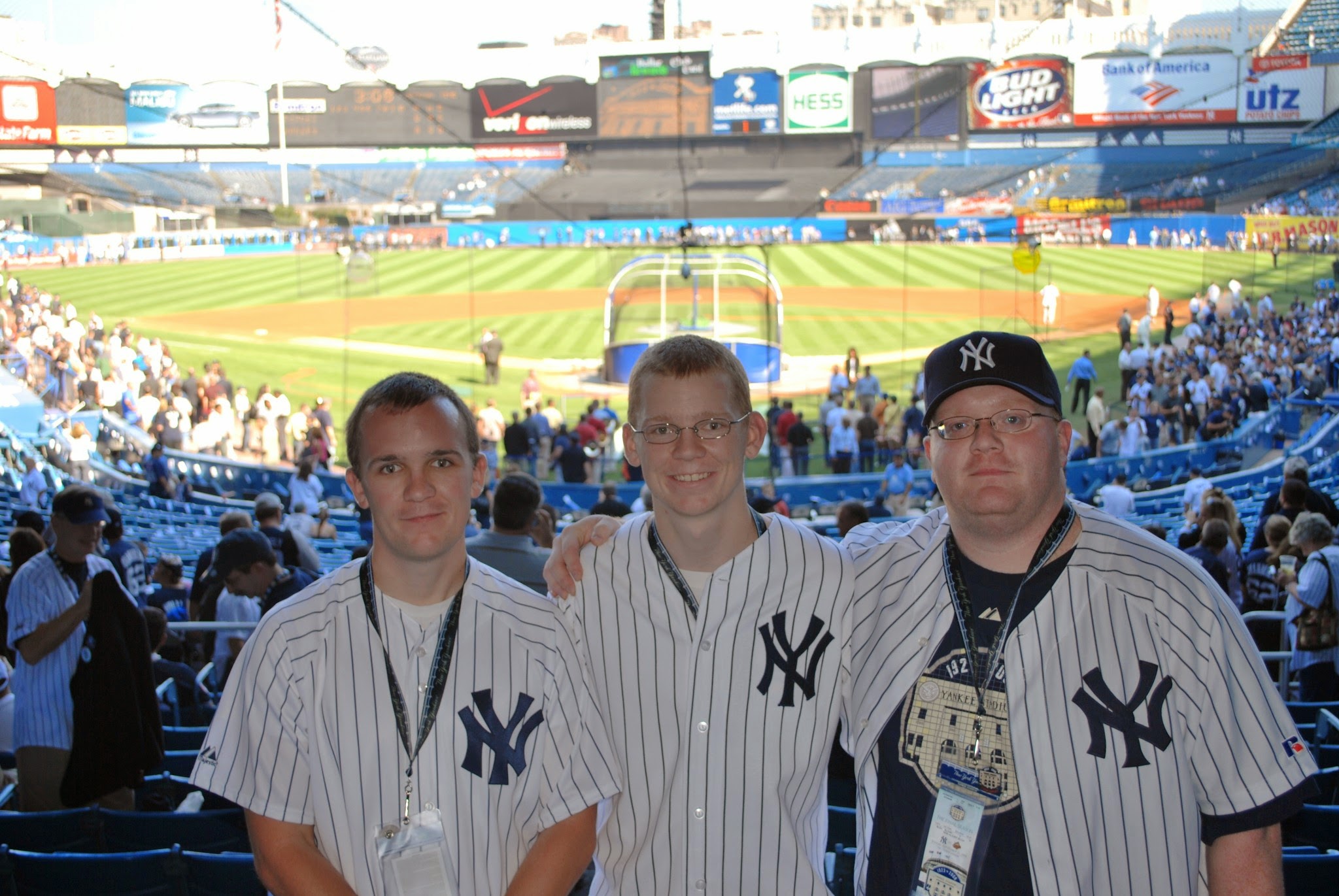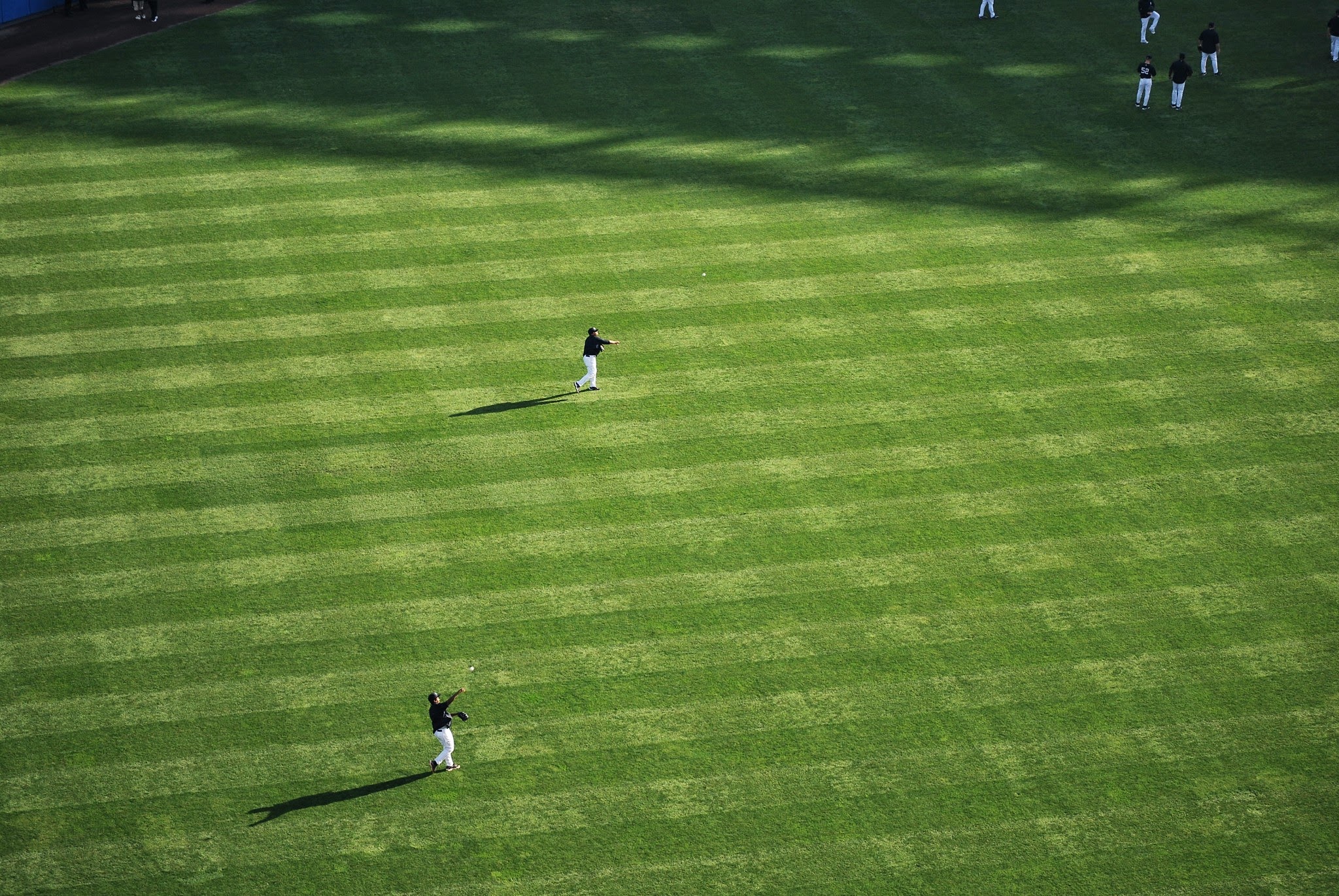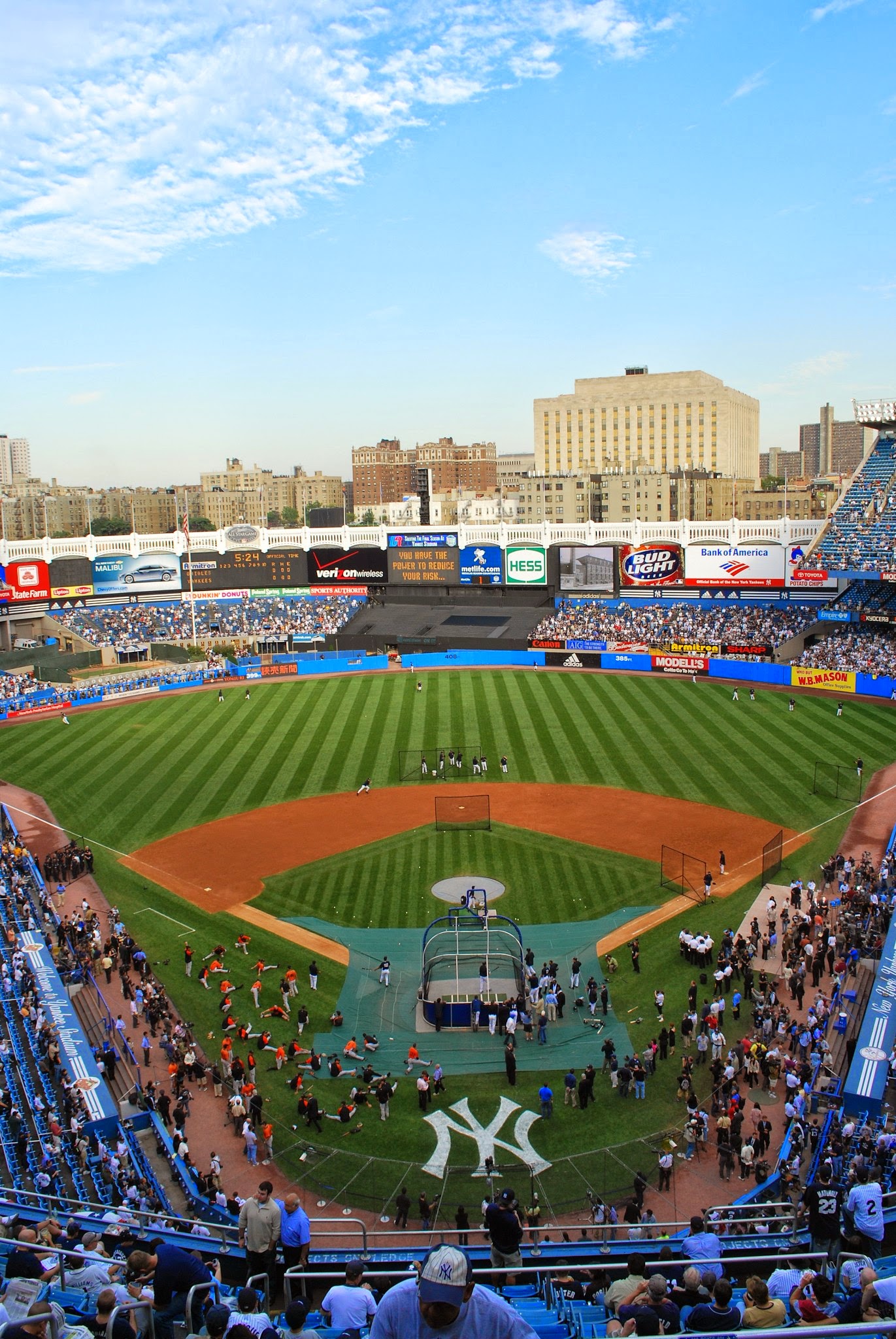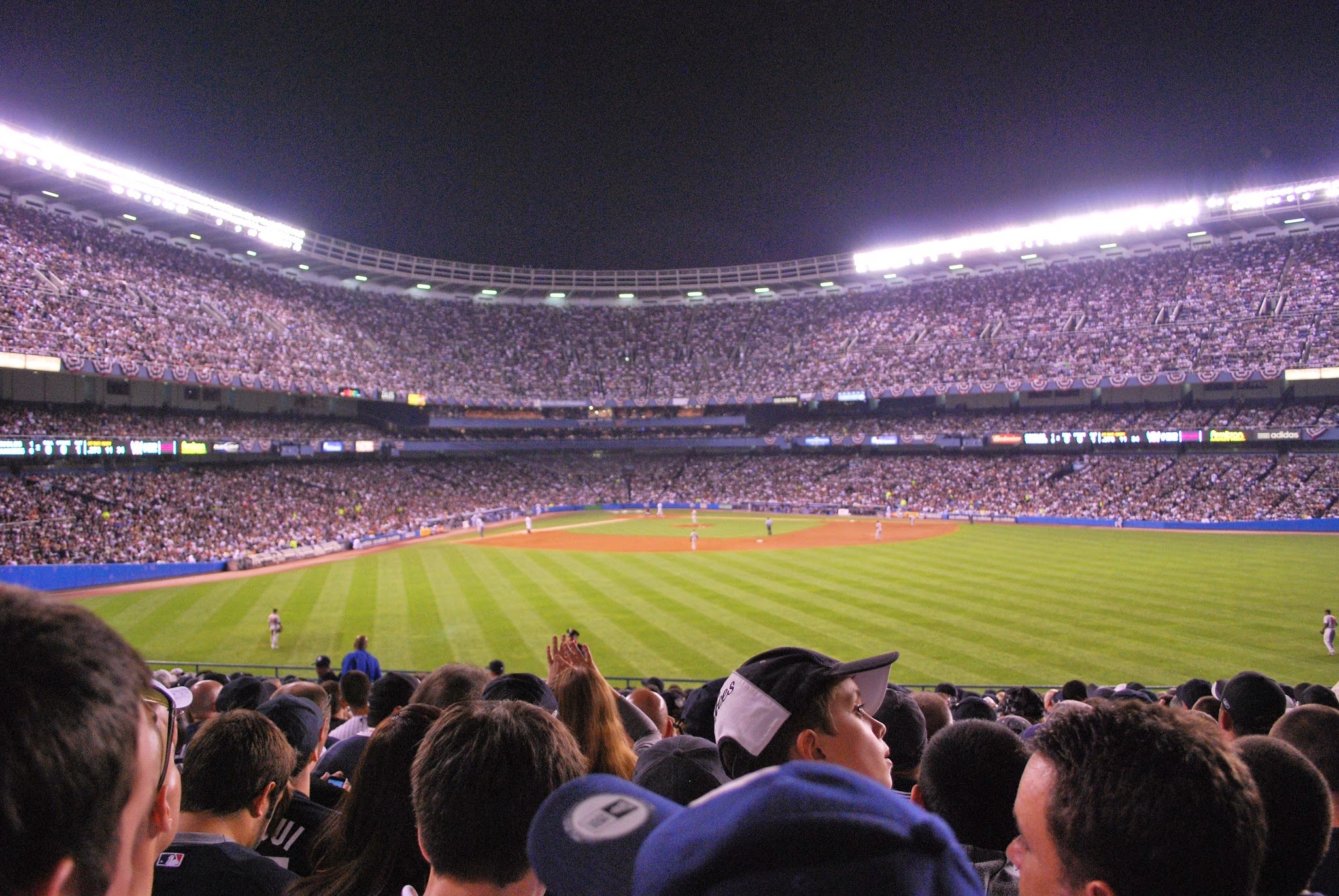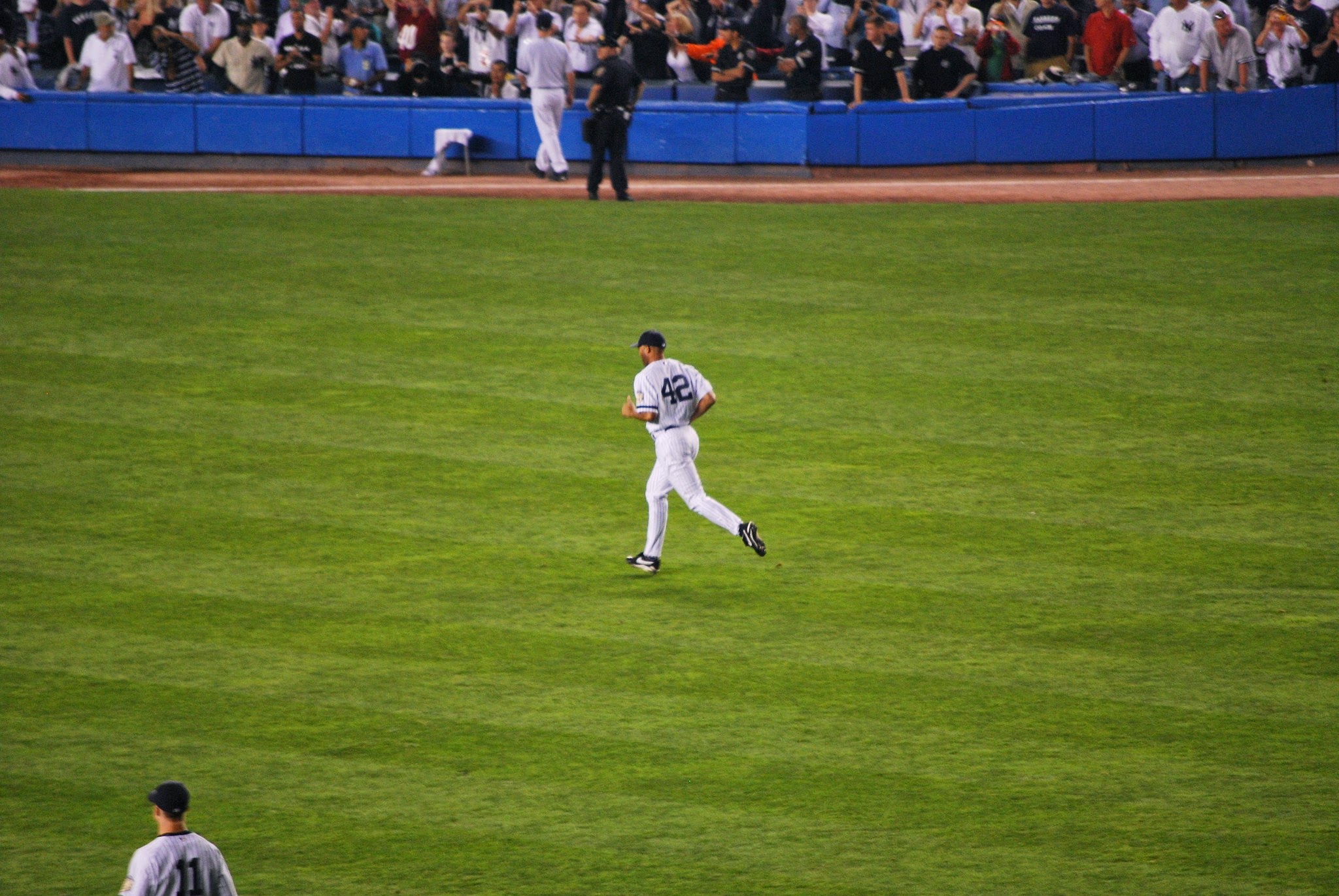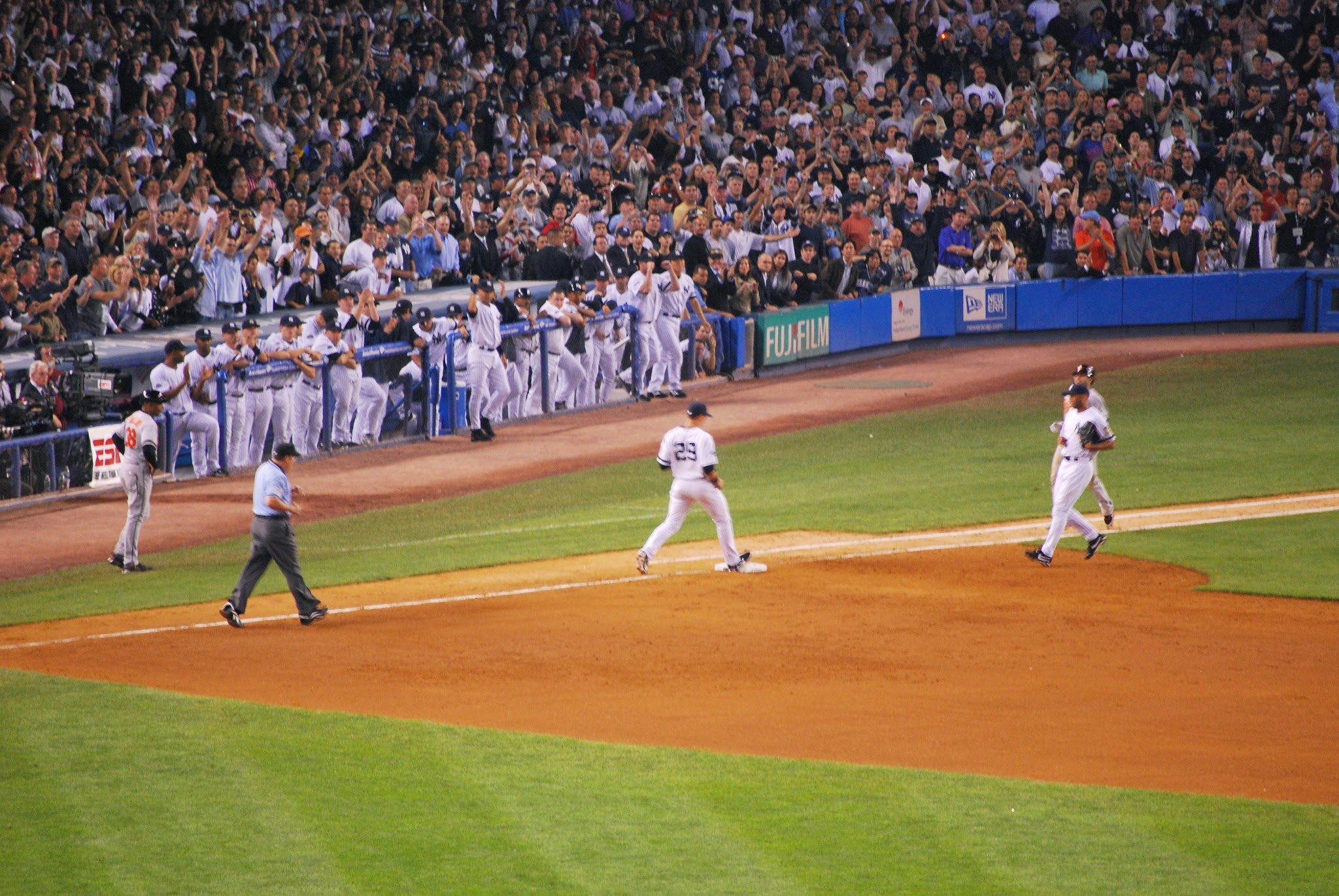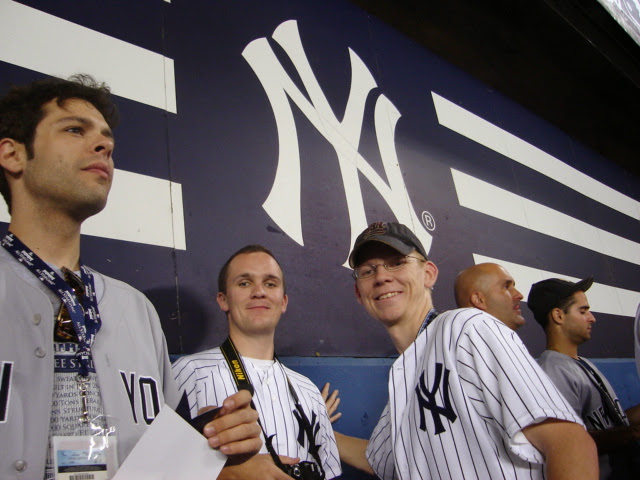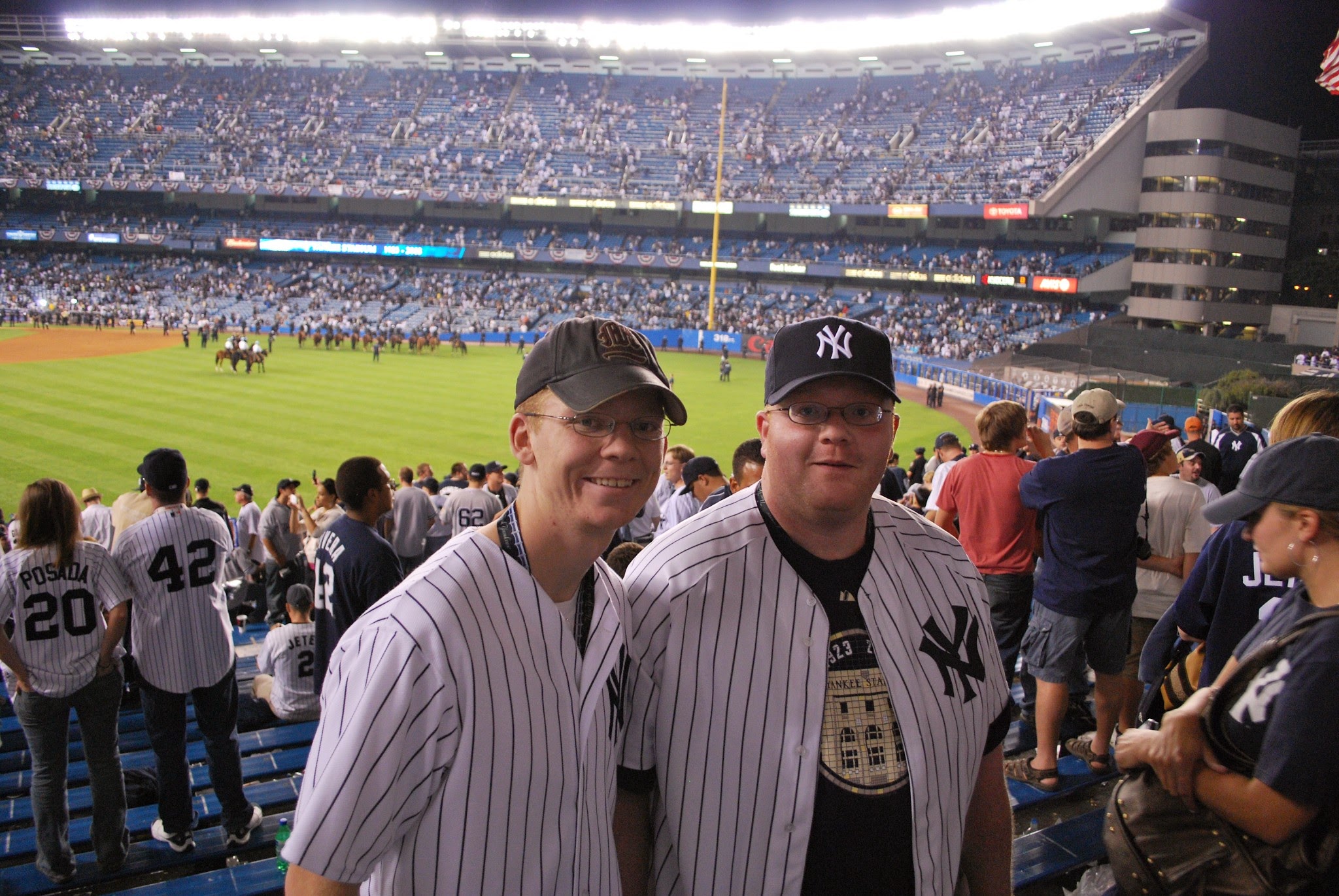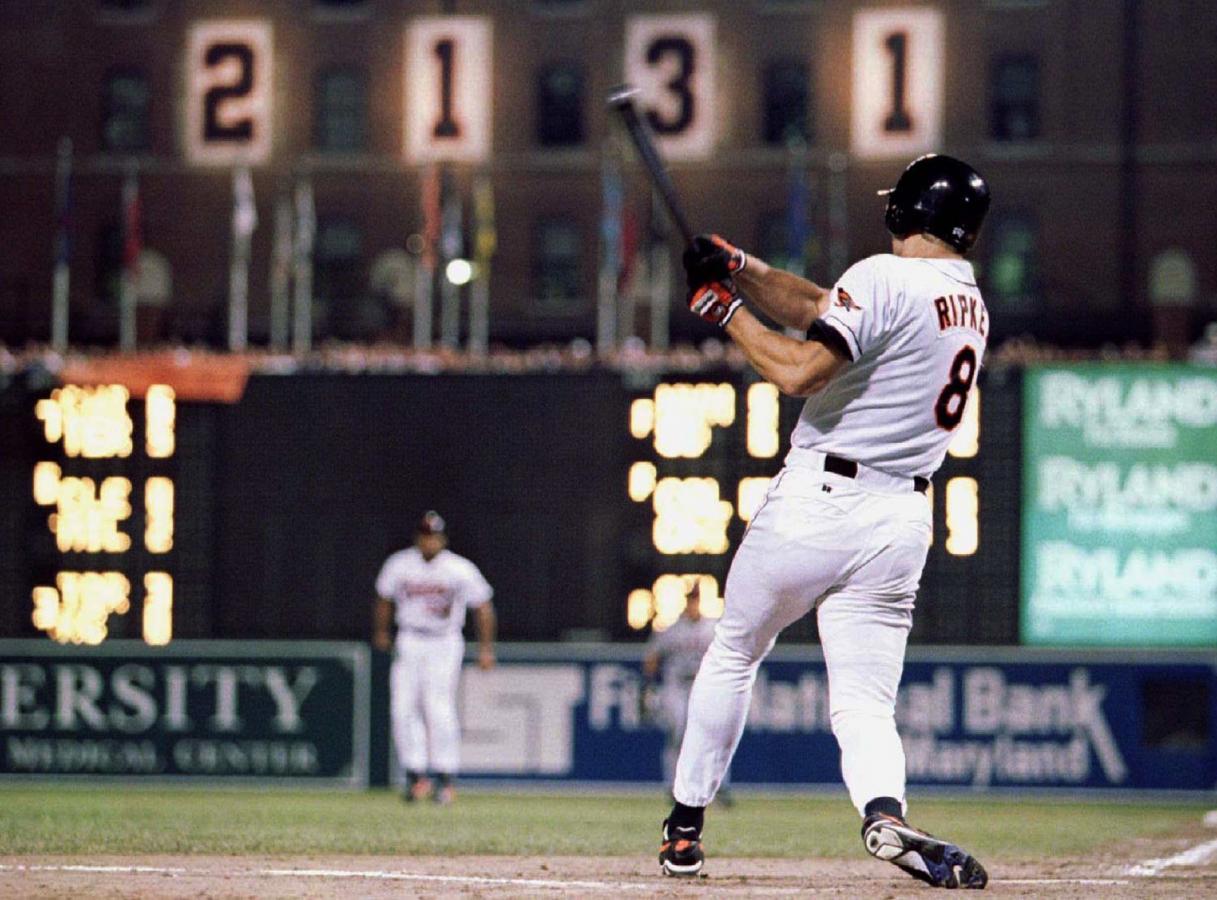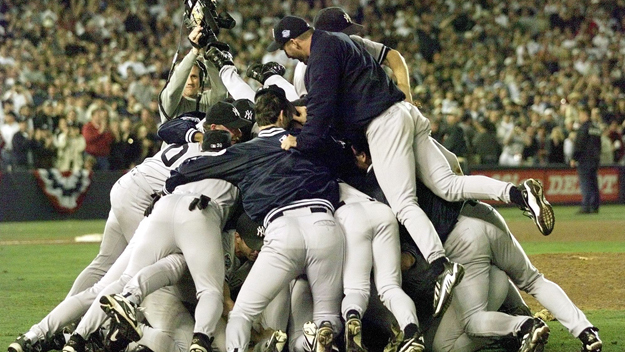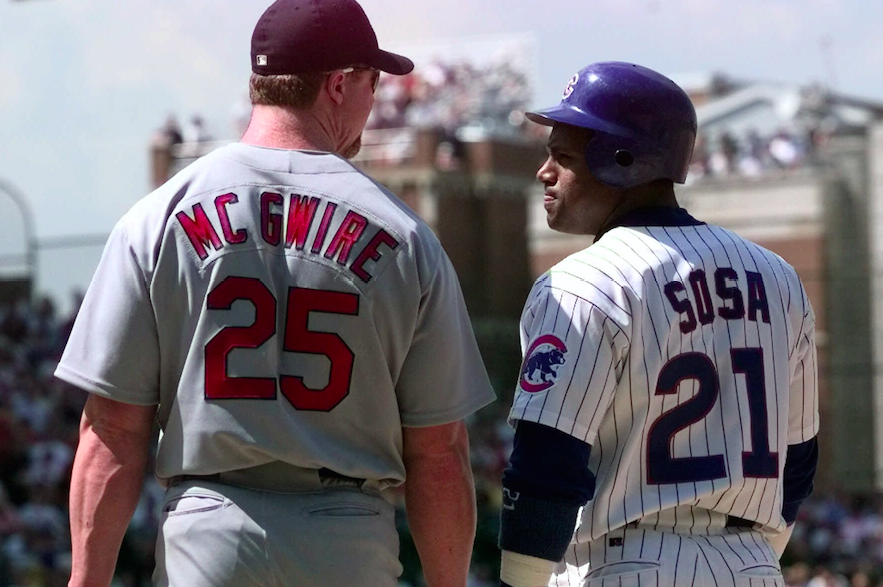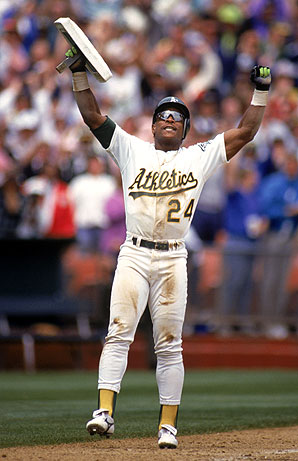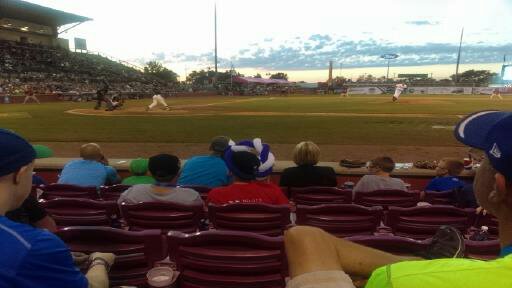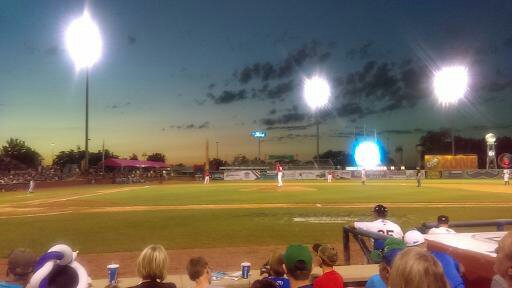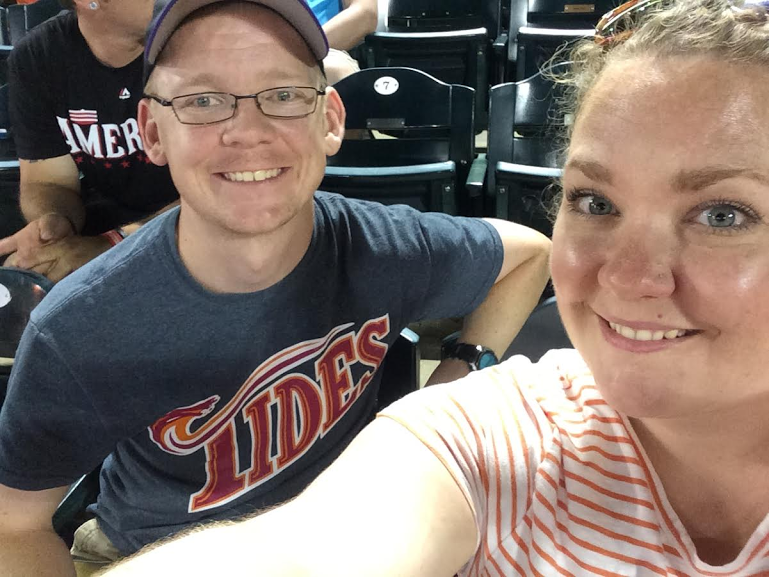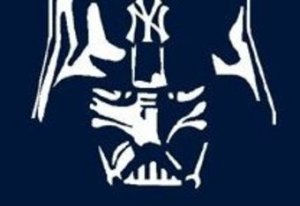Tagged: Mariano Rivera
Hall of Fame Class of 2024
The Hall of Fame Class of 2024 has been announced. Adrian Beltre, Joe Mauer, and Todd Helton will be joining Jim Leyland in Cooperstown this Summer. Beltre and Mauer are first ballot Hall of Famers, while it took Helton six ballots. Regardless how long it takes a player to reach 75% of the vote, they are a Hall of Famer. They are forever enshrined with the legends of baseball.
Billy Wagner almost joined Leyland, Beltre, Mauer, and Helton falling just five votes short. 2025 will be Wagner’s 10th and final chance to reach Cooperstown. He should head to the Hall of Fame next Summer. He may not be Mariano Rivera, but he has earned his place among the greats of the game.
Gary Sheffield will not be on the ballot next year. He is not heading to Cooperstown. He has exhausted his 10 years of Hall of Fame eligibility. Sheffield has the numbers to be a Hall of Famer. He played 22 seasons, 2,576 Games, scored 1,636 Runs, collected 2,689 Hits, including 467 Doubles, 27 Triples, 509 Home Runs, 1,676 RBI, with 253 Stolen Bases, drew 1,475 Walks, 1,171 Strikeouts, posted a .292 BA, .393 OBP, .514 SLG, .907 OPS, 140 OPS+, and 4,737 Total Bases. Sheffield is a nine time All Star, won five Silver Sluggers, the 1992 National League Batting Title, and the 1997 World Series. His wiggling bat is one of the most recognizable in baseball history. The one thing Sheffield could never shake is the connection to PEDs, which have haunted his candidacy. One of the great hitters in baseball history is not heading to Cooperstown and it is a shame.

Reaching the Hall of Fame is not meant for everyone. Eight players failed to receive the 5% to stay on the ballot. Victor Martinez, Jose Bautista, Bartolo Colon, Matt Holliday, Adrian Gonzalez, Brandon Philips, Jose Reyes, and James Shields are not heading to Cooperstown, but these eight players were among the best players of their generation. Players like Bautista and Colon are beloved, but this does not warrant their enshrinement in the Hall of Fame. They fall into the Hall of the Very Good.
The Class of 2024 will be inducted into the Hall of Fame on July 21 in Cooperstown. Get the tissues ready. Minnesota and Colorado fans have reason to celebrate. Beltre’s election is cause for celebration in Texas and the Dominican Republic. It will be a great day for baseball.
DJ
2023 Hall of Fame Ballot
The 2023 Baseball Hall of Fame Ballot is filled with talented players who spent at least a decade playing on a Major League diamond. The election results will be announced tomorrow, January 24th. As is tradition, The Winning Run has filled out its own officially unofficial ballot. We have been writing about baseball for more than a decade, but we lack the credentials to be full voting members of the Baseball Writers’ Association of America (BBWAA). No matter, we humbly submit our ballot anyway.
There are 28 candidates on the 2023 Hall of Fame ballot. Each hopes to join Fred McGriff, who was elected in December through the Contemporary Era Committee, in Cooperstown. There are 14 returning candidates and 14 first year candidates on the ballot. The 2023 ballot is also the final year of eligibility for Jeff Kent. If he is not elected this year, his path into the Hall of Fame will be through the committees.
The BBWAA is the sole voting body for the National Baseball Hall of Fame. As such, only members of the BBWAA who meet the following eligibility requirements can vote.
Voter Eligibility
- Any member of the Baseball Writers Association of America (BBWAA) who has been an active member for ten years.
- The BBWAA is limited to writers for newspapers only, including some internet newspapers.
The BBWAA sets the rules for how eligible voters can vote.
Voting Rules
- Vote for no more than 10 players.
- A player is eligible for election to the Baseball Hall of Fame if they meet the following criteria:
- They competed in ten seasons. A single game counts as a season played.
- The player has been retired for at least five seasons. The clock restarts if the player returns and plays in the Major Leagues.
- The player is not on the ineligible list; banned from baseball.
- The player must receive 5% of the vote to remain on the ballot.
- The player is elected if they receive at least 75% of all ballots cast.
In addition to the official voting rules for the Baseball Hall of Fame set forth by the BBWAA, The Winning Run has its own rule for its ballot.
The Winning Run Rules
- Known PED users are ineligible.
Every player dreams of reaching the Major Leagues and playing at such a level that their ultimate destination is Cooperstown. However, this dream is a reality for only 1% of those who reach the Major Leagues. Thousands of players begin their careers dreaming of the Hall of Fame and never spend a single day on a Major League roster. The difficulty of reaching the Major Leagues makes simply appearing on the Hall of Fame ballot, even for a single year, an accomplishment reserved for baseball’s elites. Making the ballot is an honor, even if the candidate does not receive a single vote.
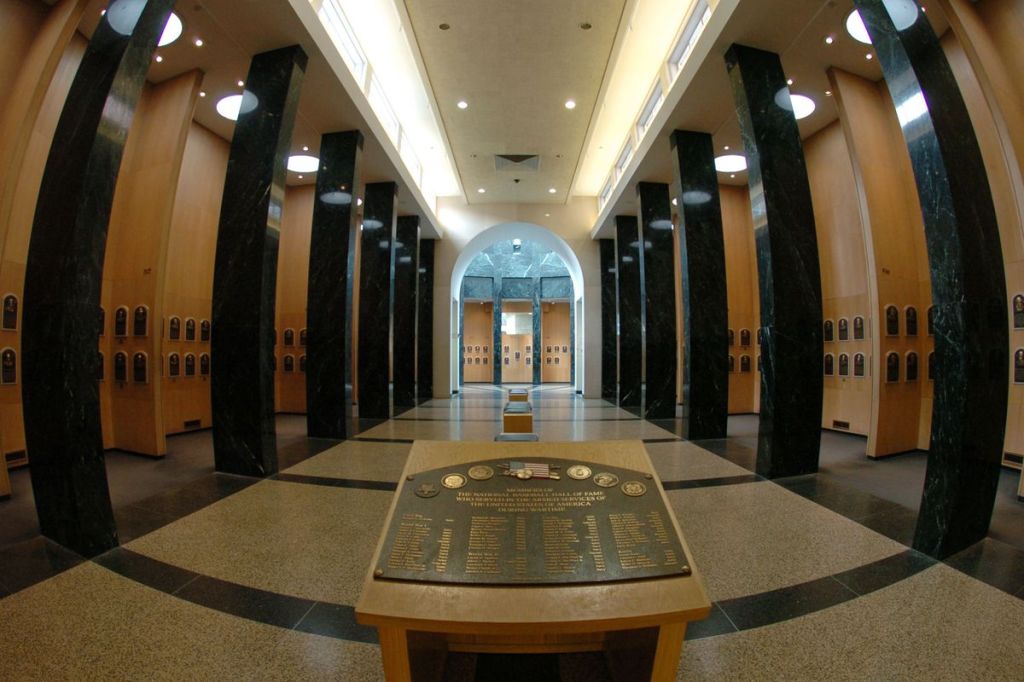
The honor of appearing on the 2023 Hall of Fame ballot belongs to these 28 candidates, their year of eligibility, and percentage of the Hall of Fame vote received in 2022.
- Scott Rolen- 6th (63.2%)
- Todd Helton- 5th (52.0%)
- Billy Wagner- 8th (51.0%)
- Andruw Jones- 6th (41.4%)
- Gary Sheffield- 9th (40.6%)
- Alex Rodriguez- 2nd (34.3%)
- Jeff Kent- 10th (32.7%)
- Manny Ramirez- 7th (28.9%)
- Omar Vizquel- 6th (23.9%)
- Andy Pettitte- 5th (10.7%)
- Jimmy Rollins- 2nd (9.4%)
- Bobby Abreu- 4th (8.6%)
- Mark Buehrle- 3rd (5.8%)
- Torii Hunter- 3rd (5.3%)
- Carlos Beltran- 1st
- John Lackey- 1st
- Jered Weaver- 1st
- Jacoby Ellsbury- 1st
- Matt Cain- 1st
- Jhonny Peralta- 1st
- Jayson Werth- 1st
- J.J. Hardy- 1st
- Mike Napoli- 1st
- Bronson Arroyo- 1st
- R.A. Dickey- 1st
- Francisco Rodriguez- 1st
- Andre Ethier- 1st
- Huston Street- 1st
Following our own rule, 5 of the 28 candidates were removed from consideration due to their connections with PEDs.
- Gary Sheffield
- Alex Rodriguez
- Manny Ramirez
- Andy Pettitte
- Jhonny Peralta
This left 23 candidates on our ballot, from which we could vote for a maximum of 10. The choices are never easy. Previous ballots we have unofficially voted on have contained more than 10 Hall of Fame caliber candidates. Reviewing our ballot from 2022 helped in beginning the voting process. Were the 10 players we voted for last year still the best choices? The Winning Run’s ballot last year listed these 10 candidates:
- Bobby Abreu (8.6%)
- Mark Buehrle (5.8%)
- Todd Helton (52.0%)
- Tim Hudson (3.0%)
- Torii Hunter (5.3%)
- Andruw Jones (41.4%)
- Jeff Kent (32.7%)
- Tim Lincecum (2.3%)
- Scott Rolen (63.2%)
- Billy Wagner (51.0%)
Based upon the voting, none of our candidates were elected to Cooperstown. Two of our votes are open again as Tim Hudson and Tim Lincecum failed to receive the minimum 5% of votes. This left us with eight returning candidates on this year’s ballot. This is our unofficially official 2023 ballot.
We removed Torii Hunter from our ballot and replaced him with Jimmy Rollins. Hunter was our final choice on last year’s ballot. Rollins was on the ballot in 2022, but after reexamining every candidate, we concluded that Rollins was the more deserving candidate. Hall of Fame voting is not a perfect process, which we have previously examined. The process too is foiled because the voters themselves are imperfect. Reaching rational decisions is not easy when more than 300 voters must agree for a candidate to reach Cooperstown. Francisco Rodriguez and Carlos Beltran took our two open votes. Both are deserving first year candidates. Torii Hunter and Omar Vizquel were the top candidates not receiving our vote. None of these men are flawless, but their off the field actions have no impact on our voting. Yes the character clause exists, but they who are without fault shall cast the first stone. The Winning Run used all 10 of our votes, but we wanted 12.
Who will join Fred McGriff in Cooperstown this summer? (Stephen Dunn/ Getty Images)
Francisco Rodriguez pitched for five teams during his 16 season career: Anaheim/ Los Angeles of Anaheim Angels (2002-2008), New York Mets (2009-2011), Milwaukee Brewers (2011-2013, 2014-2015), Baltimore Orioles (2013), and Detroit Tigers (2016-2017). Rodriguez pitched in 948 Games, Finished 677 Games, converted 437 Saves, Pitcher 976 Innings, posted a 52-53 record, 1,142 Strikeouts, 389 Walks, with a 2.86 ERA, 1.155 WHIP, and 148 ERA+. He won the 2002 World Series with the Angels. He was a six time All Star and twice the American League Rolaids Relief Award winner. Rodriguez finished in the top four of Cy Young Award voting three times. He led baseball in Saves three times and Saved 40 Games six times. Rodriguez’s 437 career Saves are the fourth most all time, behind Hall of Famers Mariano Rivera, Trevor Hoffman, and Lee Smith.
Jimmy Rollins helped to set the standard for modern Shortstops. He played for three teams during his 17 season career: Philadelphia Phillies (2000-2014), Los Angeles Dodgers (2015), and Chicago White Sox (2016). Rollins played in 2,275 Games, collected 2,455 Hits, 511 Doubles, 115 Triples, 231 Home Runs, 936 RBI, 1,421 Runs scored, 470 Stolen Bases, 813 Walks, 1,264 Strikeouts, posted a .264 BA, .324 OBP, .418 SLG, .743 OPS, and 95 OPS+. Rollins led the National League in Triples four times. He stole 30 Bases ten times. Rollins was a three time All Star, won four Gold Gloves, a Silver Slugger, and the 2007 National League MVP. Defensively, Rollins played 2,227 Games at Shortstop, totally 19,513.2 Innings, had 9,275 Chances, made 2,982 Putouts, 6,139 Assists, committed 154 Errors, turned 1,249 Double Plays, and posted a .983 Fielding %. Rollins played the sixth most Games at Shortstop, the most not in the Hall of Fame. He is 20th in Assists and 12th in Double Plays. He was one of the leaders for the Phillies in their 2008 World Series victory.
Carlos Beltran went from young phenom to wise veteran. He played for seven teams during his 20 season career: Kansas City Royals (1998-2004), Houston Astros (2004, 2017), New York Mets (2005-2011), San Francisco Giants (2011), St. Louis Cardinals (2012-2013), New York Yankees (2014-2016), and Texas Rangers (2016). Primarily patrolling Centerfield, Beltran played in 2,586 Games, collected 2,725 Hits, 565 Doubles, 78 Triples, 435 Home Runs, 1,587 RBI, 1,582 Runs scored, 312 Stolen Bases, 1,084 Walks, 1,795 Strikeouts, posted a .279 BA, .350 OBP, .486 SLG, .837 OPS, 119 OPS+. Defensively, he had above average Range for two decades. He won the 1999 American League Rookie of the Year. Beltran was a nine time All Star, won three Gold Gloves, and two Silver Sluggers. He helped five different teams reach the Postseason and provided the veteran leadership, not always within the rules, the Astros needed to win the 2017 World Series.
Removing Torii Hunter from our ballot was not fun. He was our final selection last year, but his career still deserves recognition. Additionally, Omar Vizquel once again comes up short because of his lack of offense.
We will find out tomorrow if anyone will join Fred McGriff in Cooperstown. There are many deserving candidates, but we must wait to see if 75% of the writers can agree.
DJ
Big Papi, Big Debate
David Ortiz is a Hall of Famer. Barry Bonds and Roger Clemens are not. Somehow this divide was created between three players with ties to steroids. The fall out from the Steroid Era continues, but in an odd way. Ortiz made it to Cooperstown in his first year of eligibility, while Bonds and Clemens exhausted their 10 years on the ballot. The Writers have long needed to figure out how they will handle PED players. Blackball them, welcome them in, put an asterisk on their accomplishments? Sometimes the worst thing you can do is nothing. An attempt to selectively whitewash baseball history is unwise. There is plenty we want to forget. The colorline and the necessity of the Negro Leagues. Pete Rose and the Black Sox, although MLB now seems fine with gambling. Juan Marichal’s brutal attack on John Roseboro. The Pittsburgh Drug Trials. There are plenty of horrible things that have happened in and around baseball, but you cannot pretend they do not exist. Events and people are part of baseball history, for better or worse.
There is no doubting the credentials of Bonds and Clemens. Barry Bonds is among the greatest hitters ever. He toyed with the best pitchers in the world. He could do anything he wanted, from launching a baseball into McCovey’s Cove to spitting on a pitch a quarter inch outside. Despite all of his faults, Bonds was a gifted, natural hitter. Roger Clemens earned more Cy Young Awards than any pitcher to ever toe the rubber of a Major League mound. His intimidation was more than a blazing Fastball, it was the ability to completely shut down the opposing team. Both Bonds and Clemens were Hall of Fame caliber players before father time failed to deteriorate their skills. They should have been the easiest decision for the Writers. Thumbs up or down, is PED use a disqualifier for the Hall of Fame? The borderline players are the real struggle. Did PEDs get them into the Hall of Fame or were their natural abilities enough?

David Ortiz was a specialist. The Designated Hitter, in my opinion, is not baseball. Players should play both the field and bat. If a pitcher wants to go head hunting, those Fastballs may soon come for his head. Specialists need to be among the best ever at their job. Mariano Rivera is the greatest closer ever. He waltzed into the Hall of Fame. David Ortiz was a great DH, but he is not the clear cut greatest ever. He is in the conversation.
Love it or hate it, the Hall of Fame vote is a popularity contest. Derek Jeter was one vote short of being unanimously elected to Cooperstown. Would he have come close to being unanimous if he spent his entire career in Kansas City or Pittsburgh? I doubt it.
Leaving Minnesota for Boston turned Ortiz’s career around. Not only did he emerge as a player, but he was also pushed to the forefront of baseball. The face of the Red Sox is always a big deal. Ortiz’s career in Boston came at a time when the city and the team needed a strong and vocal leader. Big Papi helped end the Curse of the Bambino, that alone is enough to make him a legend. He was also the voice of the team and the city in the aftermath of the Boston Marathon Bombing. He inspired the city in the most Boston way possible and reminded the world that Boston never backs down. The Red Sox and Boston always attract attention and Ortiz capitalized on it. Where and when he played tipped the Hall of Fame scales in Ortiz’s favor.
Like it or not David Ortiz, and his connections to PEDs, is in Cooperstown and Bonds and Clemens are not. This is the result of baseball and the Hall of Fame voters never deciding how to handle those that saved the game after the 1994 Strike and used PEDs when baseball did not care. You cannot put the toothpaste back into the tube. Baseball tried to do this with PEDs. It is time to fix this problem of their own making, otherwise baseball and those that love the game are in for many more years of this nonsensical approach to who is and is not elected to the Hall of Fame.
DJ
Balancing Problems
The BBWAA voting system for the Hall of Fame needs an overhaul. The rule of 10, a voter may vote for no more than 10 players, is not working. Some voters do not use all of their votes, while I may disagree with their approach, it is their ballot. Increasing the number of votes would help prevent future log jams on the ballot. There are 30 players on the ballot this year. Many of them deserve serious consideration. Not all deserve to be enshrined in Cooperstown, but they do deserve consideration for their accomplishments.
The size of the ballot changes every year. There were 35 players on the ballot in 2019. It was 25 last year. I do not have the answer for how to ensure only true Hall of Famers make it to Cooperstown. What I do know is some players who are not being properly vetted because of the rule of 10. It is better to have too few inductees than too many, but the various Veteran Committees continue to be burdened with correcting past mistakes. Players like Gil Hodges should have been inducted years ago. If you are a Hall of Famer at the final vote in the committee, you were a Hall of Famer at the start of the process.
Changing ballot eligibility from 15 to 10 years was a good idea in principle. It moved players off the ballot more steadily, especially those garnering enough votes to remain on the ballot, but never with a real chance of election. These spots now do not clog the ballot moving forward. However, this change also means the proper examination of a player’s career takes on greater importance. 10 years is gone in a flash. The number of votes should have changed. Instead of 10 votes, amend the rules allowing either 33% or 40% voting, with a 10 vote floor. On a small 25 player ballot, the 10 votes would be 40%. A larger 35 player ballot, the 33% vote would be 11 or 12 votes, depending on how you round. The 40% vote for the 35 player ballot would be 14 votes. Yes, human error will occur. The changing votes allowed will undoubtedly lead to a writer casting too many votes, but this can be corrected.

Avoiding the human error of checking too many boxes, if the limit was set at 12 votes, players could be recognized and log jams averted. Part of the current log jam is the ongoing debate about players like Barry Bonds and Roger Clemens. Both were first ballot Hall of Famers and both took PEDs. Where is the line separating those Hall of Famers with natural talent and those with enhanced talents? This ballot log jam is further complicated by the additions of David Ortiz and Alex Rodriguez.
The two additional votes would mean other candidates receive proper vetting. Even the most casual baseball fan knows certain players are first ballot Hall of Famers, such as Willie Mays, Mickey Mantle, and Ken Griffey Jr. In recent years, Mariano Rivera was a unanimous pick for Cooperstown and Derek Jeter fell one vote short of unanimous. When players of this stature are on the ballot, voters really only have nine votes. The two additional votes would allow the legends to waltz into Cooperstown, open space on the ballot, and prevent worthy players from falling off the ballot too quickly.
Another change is at the other end. The current minimum to remain on the ballot is 5%. A way to reduce the hold overs would be to raise the minimum to 8%. This would have reduced one returning candidate from the next ballot each year over the last decade. This small change could give first year eligible players an extra look and possible vote, while also supporting players searching for every last vote, like Larry Walker. A 3% change could help prevent log jams and have a real impact on a player’s candidacy.
Baseball is rarely quick to change. Hopefully after the Hall of Fame results are announced this January the Baseball Writers will give serious consideration to reducing the log jams currently plaguing the ballot and give each player’s candidacy a proper examination. You do not want undeserving players in the Hall of Fame, but you also do not want deserving players excluded. It is a delicate balance, one without a perfect solution.
DJ
2021 Baseball Hall of Fame Ballot
The National Baseball Hall of Fame will announce the Class of 2021 tomorrow. Those elected will hopefully join the Class of 2020 for their induction ceremony this summer. There are no clear cut inductees this year. Several players may come close, but we will see if any pass the 75% minimum for induction.
Voting Rules
- Vote for no more than 10 players
- A player is eligible for election to the Baseball Hall of Fame if they meet the following criteria:
- They competed in ten seasons. A single game counts as a season played.
- The player has been retired for at least five seasons. The clock restarts if the player returns and plays in the Major Leagues.
- The player is not on the ineligible list; banned from baseball.
- The player must receive 5% of the vote to remain on the ballot.
- The player is elected if they receive at least 75% of all ballots cast.
Voter Eligibility
- Any member of the Baseball Writers Association of America (BBWAA) who has been an active member for ten years.
- The BBWAA is limited to writers for newspapers only, including some internet newspapers.
The Winning Run Rules
- Known steroid users are ineligible.
There are 25 candidates on this year’s ballot. Many require serious consideration, while a few are honored simply to make the ballot. Below are the candidates, their year on the ballot, and 2020 vote percentage.
- Bobby Abreu- 2nd (5.5%)
- Barry Bonds– 9th (60.7%)
- Mark Buehrle- 1st
- A. J. Burnett– 1st
- Roger Clemens– 9th (61.0%)
- Michael Cuddyer– 1st
- Dan Haren– 1st
- LaTroy Hawkins– 1st
- Todd Helton- 3rd (29.2%)
- Tim Hudson- 1st
- Torii Hunter- 1st
- Andruw Jones- 4th (19.4%)
- Jeff Kent- 8th (27.5%)
- Andy Pettitte– 3rd (11.3%)
- Aramis Ramirez– 1st
- Manny Ramirez– 5th (28.2%)
- Scott Rolen- 4th (35.3%)
- Curt Schilling- 9th (70.0%)
- Gary Sheffield– 7th (30.5%)
- Sammy Sosa– 9th (13.9%)
- Nick Swisher– 1st
- Shane Victorino– 1st
- Omar Vizquel- 4th (52.6%)
- Billy Wagner- 6th (31.7%)
- Barry Zito– 1st
Here is my official unofficial 2021 Hall of Fame ballot.
I believe there are more than 10 Hall of Fame worthy candidates this year. Excluding deserving players because of the maximum of 10 rule creates an unfair system. There are also legitimate concerns about the actions of some off the field, but my focus is on the field. It is not hypocritical to exclude Bonds and Clemens as their actions impacted games. The accusations against Omar Vizquel and the public declarations by Curt Schilling did not. Poor morals do not exclude a player from the Hall of Fame. Cooperstown is a museum that preserves the history of baseball. PED users are part of that history, but they can be remembered elsewhere in the museum.
Six candidates return to the ballot after receiving my vote in 2020. Todd Helton, Andruw Jones, Jeff Kent, Scott Rolen, Omar Vizquel, and Billy Wagner. They each retain my vote, leaving just four votes for the other candidates.
Todd Helton had 10 consecutive seasons with at least 140 games played, 160 hits, 37 Doubles, while hitting over .300. Thin air does not help you make contact. He also slugged at least 25 Home Runs in seven straight seasons. Helton should not be penalized for playing in Colorado, the Hall of Fame does not exclude Rockies players.
Andruw Jones is the greatest defensive Center Fielder ever. He won 10 consecutive Gold Gloves. Awards voting is subjective, but the numbers never lie. His .990 Fld% is .007 higher than league average during his 17 season career. His Range meant Jones reached 0.46 more balls per nine innings than league average, turning 74.52 additional hits into outs every season. Runners were scared to advance on Jones. 49.2% of them held on fly outs with the next base open. He killed, threw out, 2.6% of them. 51.8% of runners did not advance, more than 5% higher than league average. Jones’ reputation prevented 86 runners from advancing a season. He was not only better than an average Center Fielder, he was better than Willie Mays. Jones prevented 253 runs, 14.88 per season, from scoring to Mays’ 173, 7.86 per season, in five fewer seasons. At the plate, Jones hit at least 26 Home Runs in 10 straight seasons on his way to 434. Put Andruw Jones in Cooperstown already.
Jeff Kent is one of the greatest offensive Second Basemen ever. His 377 Home Runs are 33 more than second place, Robinson Cano. He is a career .290 hitter. Kent had nine consecutive seasons with at least 22 Home Runs and 30 Doubles. He hit at least 21 Doubles in all 17 seasons of his career. Kent won the 2000 National League MVP. While he was average defensively, this has not excluded other Hall of Famers.
Third Base is underrepresented in Cooperstown. Scott Rolen is the logical choice to help correct this error. He won the 1997 National League Rookie of the Year. He had eight consecutive seasons with at least 21 Home Runs and 28 Doubles. In addition to his bat, Rolen was an elite defender. Playing over 2,000 Games at Third Base, with 140 defensive Runs saved, with .968 Fld%, .014% higher than league average. His Range allowed him to reach 0.19 more balls per nine innings. The hot corner needs a new addition.
Omar Vizuel was a magician with the glove. He won 11 Gold Gloves, including nine in a row. While no one compares to Ozzie Smith, Vizquel was close. Vizquel was better at the plate. A career .272 hitter. He stole at least 22 bases in six consecutive seasons and hit at least 23 Doubles in eight seasons. Vizquel never struck out more than 72 times in a season. If Ozzie Smith is a Hall of Famer, so is Omar Vizquel.
Billy Wagner posted 422 Saves during the Steroid Era. Simply, he got batters out. He posted a 2.31 ERA, 0.998 WHIP, 1,196 Strikeouts, and 300 Walks. Mariano Rivera opened the door for more Closers, Wagner should walk into Cooperstown.
The four additions to my ballot in 2021 came down to five players. Deciding who to leave off was difficult, the rule of 10 is dumb.
Hall of Fame players either burn brightly for a short time, Sandy Koufax, or have a long consistent career, Craig Biggio. Bobby Abreu fits the Biggio mold. Abreu had 12 straight seasons with at least 155 Hits. He hit at least 29 Doubles in 14 straight seasons. Abreu slugged at least 15 Home Runs in 13 straight seasons. All while playing at least 150 games a season. Playing every day builds impressive career numbers and Bobby Abreu built such a career.
Wins are an inefficient measure of a pitcher’s performance, as Felix Hernandez and Jacob deGrom can attest. The magical 300 win club may be a thing of the past. Hall of Fame voters need to adjust their expectations for pitchers. Mark Buehrle won 214 games in 16 seasons. His rookie season was the only time he did not start at least 30 games. He pitched at least 200 innings in 14 consecutive seasons. Buehrle was the workhorse for the 2005 World Series winning White Sox. He also pitched the 18th Perfect Game in Major League history on July 23, 2009. A single game does not make you a Hall of Famer, but a Perfect Game helps.
Tim Hudson, like Buehrle, deserves recognition as pitching changes. He won 222 games in 17 seasons. Hudson won at least 11 Games in all but one season between 1999 and 2012, failing in 2009 due to Tommy John surgery. He pitched over 3,100 innings with more than 2,000 strikeouts. Hudson finished in the top six of Cy Young voting four times. Hudson gave his team a chance to win every time he took the mound.
Torii Hunter has never received the recognition he deserves. He made a career out of consistency. He hit at least 21 Home Runs in all but one season from 2001 to 2011. He collected 21 Doubles for 15 straight seasons. Hunter won nine consecutive Gold Gloves in Center. He was an above average fielder, but his Range was elite. His +0.24 Range Factor per nine innings helped turn 39 hits into outs every season. Hunter’s most memorable moment was robbing Barry Bonds of an All Star game Home Run in Milwaukee. It was not as monumental as Kirby Puckett’s World Series catch. However, these Minnesota outfielders had similar careers. If Puckett earned his place in Cooperstown, so has Hunter.
There are more than 10 deserving players on the ballot this year. The final cut was difficult. Curt Schilling was 11th on my list. His stats are similar to Buehrle and Hudson, but his Postseason accolades are why many believe he belongs in Cooperstown. Schilling is outspoken. His anger towards journalists and those who do not support his political views are well documented. I did not vote for Schilling last year and he falls short again this year. I voted for Omar Vizquel. The accusations against him are horrific. Both men have made poor choices off the diamond, but the Hall of Fame ballot and voters are not their judge away from the diamond.
DJ

The House That Ruth Built
“Now batting for the New York Yankees, the shortstop, #2, Derek Jeter, #2.”
I can still hear legendary Yankee Public Address Announcer Bob Sheppard introducing Derek Jeter for his first at bat on Sunday, September 21, 2008. Jeter walked to the plate while Sheppard’s voice echoed around Yankee Stadium. Jesse, John, and I had flown to New York solely to watch the Yankees play the Orioles in the final game at Yankee Stadium. The House That Ruth Built was closing.
Baseball brought me to New York City for the first time. I would later live and work in New York for five years, but that first visit was about baseball. Knowing we only had one game to explore one of the greatest ballparks in baseball we arrived at 161st Street Station in the Bronx around 9:30 am, 11 hours before first pitch. We were greeted by a sea of fans who, like us, we eager to spend the day inside the House That Ruth Built before it closed.
We made it to The House That Ruth Built. (The Winning Run/ JJ)
The crowd outside the Stadium was chaotic, joyous, and a bit solemn all at once. The new Yankee Stadium stood just across the street, and except for a few glances I had little interest in the building. I had come to see THE Stadium, not its replacement. After slowly making our way through the line we finally entered the hallowed stadium. We soon learned our first stop would not happen. Monument Park was at capacity and the Yankees were closing it early. We scrapped our other plans and began exploring every nooks and cranny of the stadium that was accessible. We walked around the cheap seats, the foul lines, behind home plate, everywhere but our seats. Our seats were in the right field bleachers, with the Bleacher Creatures. Once you entered the bleacher area, security would not permit you to return to the rest of the stadium. We explored until our feet ached from the concrete. Once you join the Bleacher Creatures, there is no coming back.
Our first glimpse of the field was from behind home plate. Seeing the most famous baseball field in the world, where so much of the game’s history was made, where so many legends played, felt spiritual. I remember silently standing with Jesse and John gazing at the field, soaking it in. Three baseball fanatics in awe of their surroundings.
The field is beautiful from the cheap seats (The Winning Run/JJ)
Warming up before the game. (The Winning Run/JJ)
Breathtaking. (The Winning Run/JJ)
Our day touring Yankee Stadium went by in a flash before we joined the Bleacher Creatures. The pregame festivities included Yankee legends returning to the field one last time. Yogi Berra, Whitey Ford, Reggie Jackson, and other living legends were joined by the ghosts of Babe Ruth, Lou Gehrig, Joe DiMaggio, Mickey Mantle, among others. Fittingly Babe Ruth’s daughter, Julia Ruth Stevens, threw out the final first pitch in the House That Ruth Built.
Once the actual game began, it was like every Yankee game I would attend while living in New York. The nationally televised game between two teams who would finish the season a combined 36.5 games behind first place began at 8:36 p.m. There were plenty of people, like us, who were not the regulars among the Bleacher Creatures. It was easy to identify the Bleacher Creatures. They are loud, obnoxious, generally know their baseball, and above all are die hard Yankee fans. The chants began in the top of the first, roll call. Every Yankee, except the pitcher and catcher, had their name chanted until they acknowledged the Bleacher Creatures. Some players, like Bobby Abreu, waved quickly, others, like Johnny Damon, made us work for a few minutes before waving. The loudest chant was for the Captain, Derek Jeter. Jeter was the man; no one on the field commanded more respect than #2.
Our seats with the Bleacher Creatures. (The Winning Run/JJ)
I remember only pieces of the actual game. We went to the game for the experience, not necessarily the actual game. The Bleacher Creatures did what they do best, being loud. I have clear memories of a chant regarding Hall of Fame player and then ESPN Sunday Night Baseball announcer Joe Morgan, who was broadcasting the game. The chant was simple, “Joe Morgan Sucks! Joe Morgan Sucks! Joe Morgan Sucks!” Over and over and over. I was never a fan of Morgan’s broadcasting, but the Bleacher Creatures were less bashful in voicing their opinion. Another memory is a different chant “Box Seats Suck! Box Seats Suck!” The metal bleachers in right field were anything but leisurious. They reminded me of the bench at a little league game. The most memorable moment sitting among the Bleacher Creatures happened when people sitting several rows in front of us attempting to start the wave. Yes the wave. Every time they tried to start the wave they were booed and told to “Take That Sh@$ Back To Shea!” Eventually stadium security and the New York Police Department stepped in. This was late in the game after beer could lower people’s inhibitions. Obviously the people threatening those trying to start the wave were removed by security. Wrong. Attempting to start the wave gets you removed to the cheers of the Bleacher Creatures. I might have missed something someone said or did, but I like to think they were arrested for attempting to start the wave at Yankee Stadium.
On the field, Jose Molina hit the final home run in Yankee Stadium with a fourth inning two run shot off Chris Waters to give the Yankees a 5-3 lead. The Yankees would stretch out their lead in the sixth inning with a Jason Giambi RBI single and a sacrifice fly by Robinson Cano to score Brett Gardner. The tension was palpable in an otherwise meaningless game. Everyone wanted one last Yankee victory inside the House That Ruth Built. The Yankees led 7-3 heading into the ninth inning.
The guitar riff blasted through the speakers. Metallica’s Enter Sandman filled the stadium. The greatest closer of all time was trotting in from the bullpen. 11 pitches and three groundouts later, Mariano Rivera closed Yankee Stadium.
Mariano Rivera coming in to close out Yankee Stadium. (The Winning Run/JJ)
The final out. (The Winning Run/JJ)
Jesse and me after the game. (The Winning Run/JJ)
John and me after the game. Note the mounted police on the field to keep people off.(The Winning Run/JJ)
The celebration was not the World Series many envisioned to close Yankee Stadium, it was still special. Derek Jeter spoke to the crowd, thanking the fans and creating a bridge between the two stadiums. He was brief and to the point before leading the Yankees around the field to say goodbye. Yankee Stadium was the House That Ruth Built and the House That Jeter Closed.
The game ended just before midnight. An era in baseball history was closed. No one wanted to leave. Grown men were tossing empty water bottles to the player’s kids on the warning track, begging them to fill the bottles with dirt before tossing them back. Every nook and cranny inside Yankee Stadium was filled with memories and the thought of never coming back was almost too much for some to bear. Normally at the end of a Major League game the ushers and security are quick to push you out of your seats. This was different, we stayed in our seats for an hour after the final out. The crowd was slow to disperse and the stadium staff did not have the usual urgency to clear the stadium. It was after 1 a.m. when we left Yankee Stadium. No one was in a hurry to leave the ghosts of baseball history alone in a now closed Yankee Stadium.
DJ
The Summer of 1998: 20 Years Later
It has been 20 years since the dawn of the 1998 baseball season. The season would see one of the great teams of all time as the Yankees marched towards the World Series, meanwhile Mark McGwire and Sammy Sosa were chasing the single season home run record. Knowing what we know now about many of the players who helped revive baseball that summer does diminish some of the fondness. However as Mark McGwire famously said before Congress, “I am not here to talk about the past.”
The 1994 players strike severely damaged baseball. The cancellation of the World Series and the delayed start of the 1995 season saw fans turn their backs on the game. Arguing who is blame, the players or the owners, for this dark time in baseball is for another day, what mattered then was how would the game win back the fans it lost. Some fans still see 1994 as the death of baseball, don’t believe me check out this Facebook group which has more than 22,000 members. Right or wrong baseball needed a season to get its fans back.
Cal Ripken Jr. gave baseball a moment it needed to draw fans back to the game. (REUTERS/ Gary Hershorn/Files)
Baseball got a much needed boost when Cal Ripken Jr. played his 2,131st consecutive game, passing Lou Gehrig for most consecutive games played on September 6, 1995. This was a moment baseball desperately needed showing the good of the game. It was however, a moment. Baseball needed more than one night of glory, it needed a season of suspense and wonderment.
The 1998 New York Yankees are one of the greatest teams ever assembled. The Boston Red Sox won 92 games, yet finished 22 games behind the Yankees in the division. The Yankees finished the season 114-48. The Bronx Bombers had eight players with at least 17 home runs, five players with at least 84 RBI, and eight players with 21 or more doubles. The Yankees hit .288 as a team. On the mound, all five Yankee starters had at least 12 wins, a team ERA of 3.82, with the starters averaging 6 ⅔ inning per start, plus Mariano Rivera nailing down 36 saves out of the bullpen. In the Playoffs, the Yankees swept the Texas Rangers in the American League Divisional Series three games to none, allowing only one run. In the American League Championship Series, the Yankees dispatched the Cleveland Indians in six games. In the World Series, New York swept the San Diego Padres in four games. The 98 win Padres were no match for the Yankees. The biggest team in baseball helped put the game back into people’s lives as they rolled through the season and playoffs. Yankee dominance helped, but the primary attraction was in the National League.
There was little drama as the Yankees swept the World Series. (Jeff Haynes/ AFP/ Getty Images)
Mark McGwire and Sammy Sosa later became the poster children for what was wrong with baseball, but in the summer of 1998 they were what made baseball relevant again for much of the country. Divisional rivals on two of the most prominent teams in the sport, McGwire and Sosa embarked on a home run race that captured the attention of the country. When Roger Maris broke the single season home run record held by Babe Ruth, there was backlash. People felt Ruth’s record should be left alone. When Maris ultimately hit home run number 61 in 1961 he did it in game 162, which many believe meant his record deserved an asterisk as he took more games than Ruth’s 154 game schedule in 1927. If McGwire, Sosa, or some other slugger could hit 60 home runs fewer than 154 games they would hold the record.
McGwire hit 11 home runs by the end of April, only to hit 16 in May to bring his season total to 27 as the calendar turned to June. On May 22nd, Sosa had only 9 home runs against McGwire’s 24. Over the next six weeks Sosa got red hot, hitting 24 home runs. Heading into the All Star Break, McGwire lead Sosa 37 home runs to 33. The race for 62 was on. McGwire hit his 50th home run of the season on August 20th, Sosa followed with his 50th three days later on August 23rd. However in between a whirlwind began on August 22nd regarding McGwire’s use of Androstenedione. McGwire maintained his use of Andro was legal and it did not give him any added benefits on the field. This is perhaps the clearest beginning of the steroid era entering public knowledge. The use of Andro did little to distract the public from the frenzy of the home run chase. September 8th saw McGwire hit his shortest home run of the season, 341 feet, just clearing the left field wall in Busch Stadium. McGwire and the Cardinals were hosting Sosa and the Cubs that night. After initially missing first base in the midst of his joy, quickly retreating to touch the missed base, McGwire rounded the bases to officially set the new single season home run mark at 62. Sosa would tie McGwire at 62 home runs on September 13th. As the 1998 season wound down the question turned to how high McGwire and Sosa would push the home run record. For the only time all season Sosa took the lead on September 25th, when he hit his 66th and final home run of the season. McGwire would finish with a flurry, hitting five home runs in the last three games of the season to finish with 70 home runs.
The home run race between Mark McGwire and Sammy Sosa helped revive baseball one home run at a time. (AP Photo/ Beth A. Keiser)
There was no doubt both McGwire and Sosa broke the single season home run record, Ruth’s and Maris’. Sosa would be named the National League Most Valuable Player, while McGwire got his name in the record books. The summer of chasing Ruth and Maris brought baseball the excitement back it lost in the 1994 players strike. The chase between McGwire and Sosa, coupled with the total dominance of the Yankees gave baseball the season it needed to win back fans and rebuild trust.
20 years have passed since the summer of 1998. We have learned so much about the men who played that summer. Far too many had their abilities aided by steroids and other performance enhancers. The steroid era was on full display, we just did not know it yet. The revival of baseball was both helped and hurt by the steroid era, many players have since fallen from grace. The game continues to grow and much of the magic I remember as a kid has returned. The summer of 1998 helped revive baseball, and yet my most vivid memory from that summer is having no interest in any of it. 1998 was my last season playing organized baseball. I had a coach who took the fun out of the game. He would scream and yell when the players, myself included, did not get a hit. He changed my batting stance over and over again. I came to dread going to baseball practice and games. The joy of playing baseball was gone. A year or so later I wanted to play for a travel team, but I was late to the tryout we did not get out of the car. This is how my baseball career ended. I am under no illusion I was good enough to play professionally, maybe not even in high school. However, one person ruined baseball, it took years for my love of the game to return. I hope he still remembers how great those handful of victories were for our Spring 11/12U rec league team 20 years ago.
DJ
To Catch A Thief
Christmas is not the only cause for celebration on December 25th. One of the most unique players in baseball history celebrates his birthday around the Christmas tree, Rickey Henderson. The career leader in Runs, Stolen Bases, Caught Stealing, and Self-Confidence turns 58 today.
The legendary speedster terrorized opposing pitchers and catchers for 25 seasons. Rickey Henderson’s game was built upon speed, confidence, and skill. Henderson had a career .279 BA and .401 OBP. Simply put, he got on base and then used his speed to help his team win.
Getting on base by a walk or a hit did not matter to Henderson, his job was to just get on base any way he could. The ability to know the strike zone means not chasing pitches out of the strike zone. Avoiding bad pitches forces the pitcher to throw strikes if they are serious about getting the batter out. However, his speed on the bases meant pitchers did not want to give Henderson a free pass which led to 3,055 hits and 297 career home runs. Force is mass times acceleration and Rickey Henderson had enough speed to spare for some added power. Pitchers were forced to decide if they wanted to play with speed or power, neither was a good option.
-
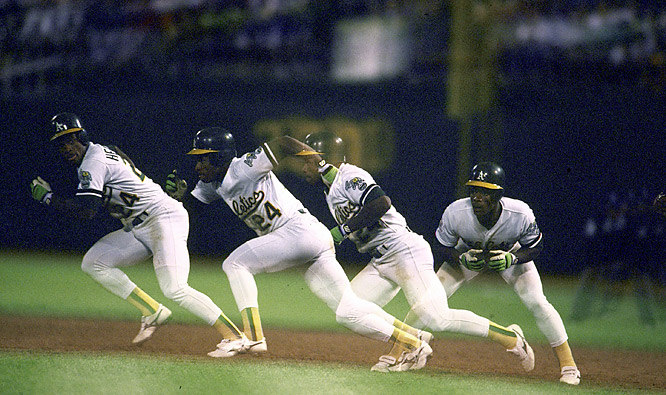
-
Ricky Henderson never needed any extra advantage on the base paths. (www.90feetofperfection.com)
Rickey Henderson is second all time with 2,190 walks. He led the American League four times in walks and had seven seasons of 100 or more walks. A walk for a player with the speed and skill of Henderson was just as good as a hit. Henderson averaged 0.456 steals per game in his 25 season career. A walk meant a high probability of a man on second in the near future, so there was not much difference between a walk and a double.
The speed that made Henderson a Hall of Famer was never in short supply. Henderson stole 50 or more bases in 14 seasons and for three of those seasons he stole more than 100. He led the league in steals 12 times, and holds the all time record for most career steals with 1,406. Hall of Famer Lou Brock has the second most career steals with 938; Brock’s career total is about two-thirds of Henderson’s career total. It took Lou Brock 19 seasons to collect his 938 steals, whereas it only took Henderson 13 seasons to catch and pass Brock. Henderson played 12 more seasons after surpassing Brock’s record. The longevity of Henderson’s career has made the task of breaking the steals record among the most difficult records to break in all of baseball. Henderson first led the American League in steals in 1980 with 100 steals at 21 years old. He led the American League for the 12th and final time in 1998 with 66 steals at 39 years old. Even as he approached the twilight of his career, Henderson continued to run, he stole 109 bases after turning 40 years old.
Getting on base and stealing bases is exciting, but scoring runs is what matters most to the team. Henderson led the American League five times in runs scored, scored 100 or more runs in 13 seasons, and holds the all time career record with 2,295 runs scored. Getting on base means opportunities to score runs. Stealing a base or taking the extra base only increases the chance to score and puts pressure on the pitching and fielding.
The self-proclaimed Greatest of All Time. (www.SI.com)
Examining the career or single season numbers for Rickey Henderson from now until eternity can only do so much to convince a person of his greatness. The true test of greatness is continued success despite the opponent knowing what you are trying to do. Much like Mariano Rivera throwing the cutter, the opposition knew when Henderson was going to steal and were mostly powerless to stop him. Henderson was successfully in 80.75% of his stolen base attempts; a success rate above 65% is considered good. Everyone in the ball park knew Henderson was going to steal when he got on, yet opposing pitchers and catchers could do little to prevent him from running wild. Henderson’s speed on the bases meant pitchers had to pay attention to him otherwise a walk could result with a man on second or third.
Rickey Henderson was elected to 10 All Star games, won the 1990 American League Most Valuable Player award, and was a first ballot Hall of Famer in an era that placed the emphasis on power not speed. He was not a return to the dead ball era of baseball where speed carried the day; rather Rickey Henderson was something baseball had never seen, and most likely never will again. Many players arrive in the Majors with the ability to steal bases and develop their home run power later. Only a select few have the ability to maintain their speed while developing that power. It’s a rare sight to see them causing havoc on the bases for 10 seasons, much less 25.
Happy Birthday to the Greatest of All Time
DJ

The Future Is Coming
The 2013 MLB All-Star Game was hosted by the New York Mets. Despite working in New York I could not attend the festivities (Bernie did though and one of our mutual friends got to attend the game because of a promotion at the Fan Fest). The 2015 MLB All-Star Game was hosted by the Cincinnati Reds, but I could not attend as I moved to Cincinnati about a week after the festivities ended. However, 2016 is the year I finally made it to the All Star Game, not in San Diego but the South Atlantic League Single A All-Star Game hosted by the Lexington Legends. Not what you may have expected.
Great seats for a great game. (The Winning Run/ DJ)
Obviously these players are not household names, but I recognized a few of them. Luke Dykstra, son of Lenny Dykstra, plays for the Rome Braves. Mariano Rivera Jr., son of Mariano Rivera, plays for Hagerstown Suns. Tate Matheny, son of Mike Matheny, plays for the Greenville Drive. Every player selected to this All Star game has a ways to go before leaving a lasting legacy on the game.
The game itself produced some great baseball. Diving catches, beautifully played ground balls, and excellent pitching. The game featured 22 strikeouts, 11 for each team. Each of the 15 pitchers who pitched a complete inning had at least one strike out, with Jake Cosart of the Greenville Drive striking out the side during his inning of work. The game itself was fun and the players and fans were clearly enjoying the experience. The weather was perfect for the 8,126 fans who watched a crisp game played in under two and a half hours. The casual fun that has always characterized minor league baseball meant wacky promotions and being able to sit close to the field. It gives a sense of closeness and intimacy in contrast to attending a Major League game that has an air of reverence. Sort of like comparing your friend’s backyard barbeque to corporate sponsored tailgate. Both are fun but feel radically different.
A beautiful night for baseball at Whitaker Bank Ballpark. (The Winning Run/DJ)
P.J. Colon of the Columbia Fireflies started for the South team. Colon was born in Belfast, Northern Ireland and grew up in California. There are not many baseball players to come from Europe, much less Northern Ireland, so those who do are key to continuing the international growth of the game. Opposing Colon was the North team’s starter, Mitch Keller of the West Virginia Power. Keller would earn the victory and Colon would receive the loss as Max Schrock of the Hagerstown Suns drove in the first of his two RBI during the first inning. Schrock won the MVP award by finishing the game 2 for 3, with 2 RBI and a double.
Baseball is better with family, especially the soon to be sister-in-law. (The Winning Run/ KCL)
Baseball can be a fickle sport. Most likely not every player on the field during the All Star game will reach the Major Leagues. Seeing talent that is making its way through the Minor Leagues towards MLB is exciting. Although these players are still developing, you can already see how they will help propel the game forward. The next great star is not simple to spot, but on that field were the potential MLB All Star players of the future who will delight fans for years to come. I have seen the future of baseball, and it is good.
DJ
Restoring Old Leather…Part 3
This is a three-part series on how I’ve come to recapture my love for America’s favorite pastime.
So it’s been nearly two decades since I paid careful attention to baseball. When I was working in financials before the 2008 crisis, I would get the Wall Street Journal and the Washington Post daily. I’d save the sports sections for my lunch break and read some highlights and box scores over coffee and cigarettes. That’s the most I would do and I was certainly more engrossed in football (college, pro, and the sport that’s called football by the rest of the world), even to the exclusion of other sports.
Some of you may have already done the math and realized that I was hardly paying attention to baseball during an important time. The creation of the “Evil Empire” of the Yankees dominating the late 90s and early 00s that led to, for me, a heartbreaking moment of witnessing the end to the Curse of the Bambino. The Yankees letting the Boston (sorry, I’m still enough of a Yankees fan that I’m not going to type their entire name) Red $%# make history by being the first team to ever come back from a 3 game deficit to win the ALCS. I also remember bits and pieces of the Subway Series, mostly because I saved a magazine issue that ran a story about it. 33% of the championships for a 15 year span for the Yankees. I wasn’t alive the last time another team in baseball could make a boast like this. Instead, I was spending most of those years studying, watching football, and guzzling beer.
The market crash taught me an interesting lesson about the notion of value. It’s an idea that’s tossed around often. Frequently interchangeable with words like price, cost, worth…but ultimately misunderstood. I started questioning what I valued. When the Yankees won the World Series again in 2009, I wasn’t paying much attention to sports at all but I watched some of the games. I always loved watching Mariano Rivera close games and he will probably forever remain my favorite Yankee of all time. But this time around, it was different. The thrill was gone…I had misplaced my values.
I’ve worked in education where I’ve taught children of all ages. I’ve taught the self-discipline and techniques of martial arts to kids as young as four and had the pleasure to watch them become fine teenagers and young adults. I’ve helped kids talk to their parents about problems and helped parents figure out how to give their kids the needed direction to straighten them out. I still have a little paper helicopter figurine an ingenious little 4th grader made me one day because he was so excited that I, an Asian man, was his substitute teacher. On the last day of a five month teaching assignment for an elementary school music teacher, the entire third grade class marched through the halls with handmade cards, placed them in a basket by my door, and gave me a hug.
I worked in the financial industry as a mortgage trader working with non-securitized whole loan packages. The sort of toxic assets that weren’t supposed to be packaged in those CDOs (Collateralized Debt Obligation) that spooked the market and brought it crashing down in 2008. Don’t blame me, I know guys that were willing to buy those things off the big banks who wouldn’t admit to the losses they needed to take. Forget supply and demand, the sky was falling. Sellers felt like what they had was worth more than the price they were hearing from the buyers – worthless.
I pretty much lost my shirt over the financial crisis and the rate I was paid to be a substitute teacher was nice while I was working except, when spread out over the year, I wasn’t making enough to get out of my mom’s house. We live in a social world, full of human interactions. Some of these interactions are emotionally fulfilling relationships that may be called friendship. Others involve exchanges in goods and labor and the relationship is labeled as business. They usually mix as well as bleach and ammonia.
There’s a really great book about human behavior called Predictably Irrational by Dan Ariely. If you read the excerpt I linked to, you’ll see how baseball has this element where social norms clash with market transactions in a variety of ways. If the Nationals really consider me part of their “family” and care about me, why do they charge so much (or at all) for their games and concessions? Anyway, it made me think about the human element to sports, the language we use to describe the game, the minor league system, and so much more. I’ve come to find that baseball is a fantastic analogue for life. You may want to argue that all sports are analogues to the struggle that is life. If sports are a reflection our lives and society, then I would argue that we should try to live a baseball life over any other.
Baseball has been quite reluctant to adopt instant replay to correct calls. The human element of umpiring is part and parcel of the game. We may not agree with an umpire’s strike zone but we often forget that baseball players come in various heights. So imagine…
- Wilson Ramos (6’0”) crouching behind the plate and…
- Jake Marisnick (6’4”) having just been struck out by…
- Doug Fister (6’8”) who took him up the ladder but is now going to pitch to…
- Jose Altuve (5’6”)
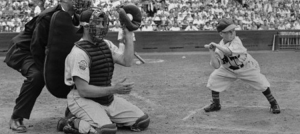
Eddie Gaedel’s strike zone was almost non-existent. (www.sportingcharts.com)
Is Fister really adjusting to a different strike zone? When Ramos frames the pitch down is it less believable because Altuve’s chest is about half a foot lower than Marisnick’s? Even though the ump is supposed to consider a number of things, don’t we just care about consistency? That’s the human element, the X-factor that requires the personal touch making every game just a little different.
George Carlin had an amazing part to his act where he compared baseball to football. Although I think he may have been more of a football fan than a baseball fan, I think the comparison still holds today. It also makes you think about what we value and how we place value on things. Kid acts out in class. Is it an error? Or a penalty? I suppose what I want to everyone to ask themselves is that if life is such a battle, how do we win? Is tearing down another a worthwhile act to win? What if we helped each other avoid making errors? Would this world be a better place?
Baseball is a celebration of quirks and history. If it weren’t for baseball fanatics creating the Rotisserie League, would we even have fantasy sports leagues? Fantasy is one of those ways that I’ve come back into following players and teams. A way to keep my interest going and fill out my knowledge of the game the way I used to trying to memorize the stats on baseball cards. I came back to this sport because we can all use a bit more celebration in our lives. I hope you’ve enjoyed reminiscing with me and exploring the ways that life applies to baseball. Let me know what you think and let’s discuss this beautiful game.
BL @BHGLee
